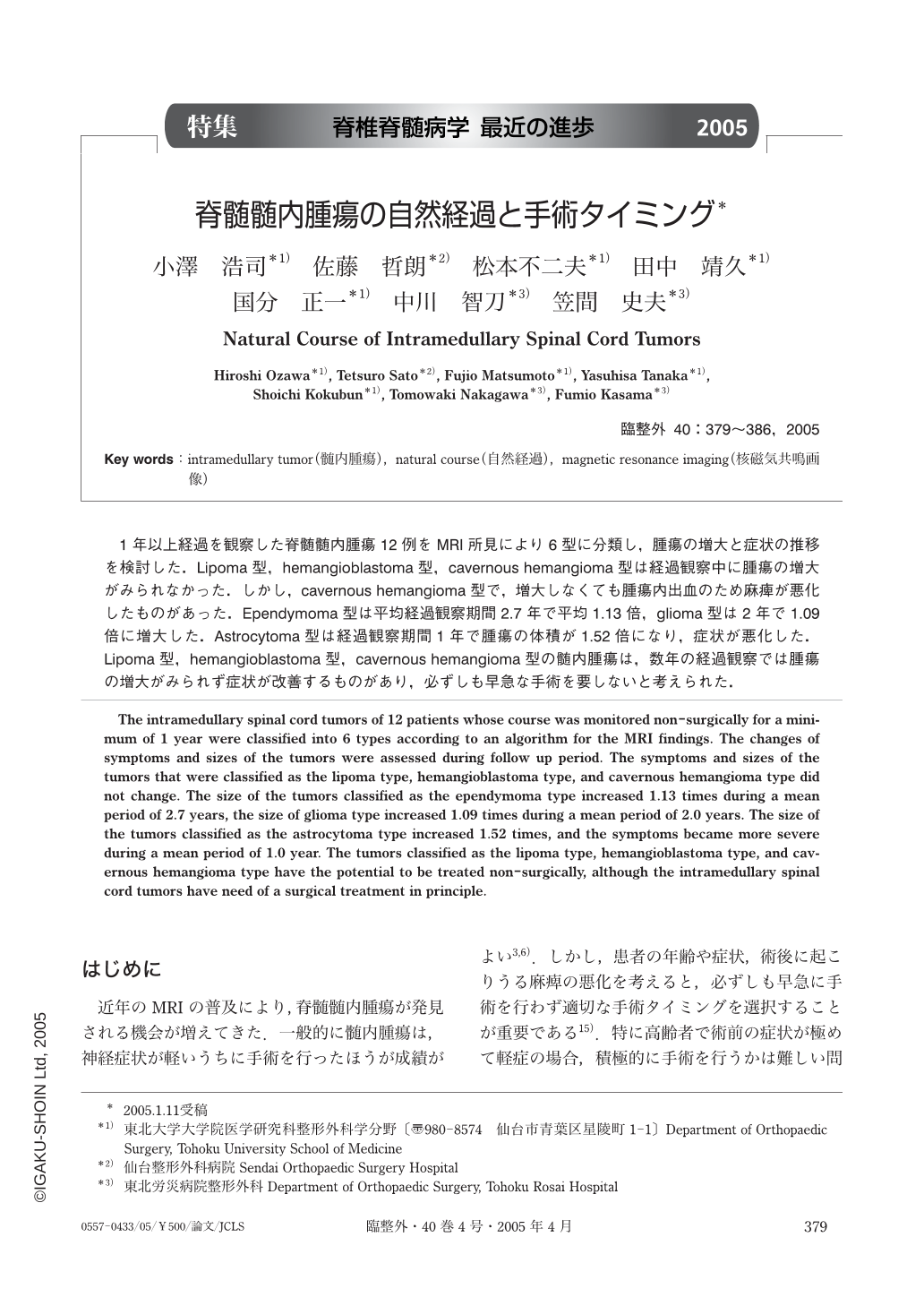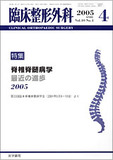Japanese
English
- 有料閲覧
- Abstract 文献概要
- 1ページ目 Look Inside
1年以上経過を観察した脊髄髄内腫瘍12例をMRI所見により6型に分類し,腫瘍の増大と症状の推移を検討した.Lipoma型,hemangioblastoma型,cavernous hemangioma型は経過観察中に腫瘍の増大がみられなかった.しかし,cavernous hemangioma型で,増大しなくても腫瘍内出血のため麻痺が悪化したものがあった.Ependymoma型は平均経過観察期間2.7年で平均1.13倍,glioma型は2年で1.09倍に増大した.Astrocytoma型は経過観察期間1年で腫瘍の体積が1.52倍になり,症状が悪化した.Lipoma型,hemangioblastoma型,cavernous hemangioma型の髄内腫瘍は,数年の経過観察では腫瘍の増大がみられず症状が改善するものがあり,必ずしも早急な手術を要しないと考えられた.
The intramedullary spinal cord tumors of 12 patients whose course was monitored non-surgically for a minimum of 1 year were classified into 6 types according to an algorithm for the MRI findings. The changes of symptoms and sizes of the tumors were assessed during follow up period. The symptoms and sizes of the tumors that were classified as the lipoma type, hemangioblastoma type, and cavernous hemangioma type did not change. The size of the tumors classified as the ependymoma type increased 1.13 times during a mean period of 2.7 years, the size of glioma type increased 1.09 times during a mean period of 2.0 years. The size of the tumors classified as the astrocytoma type increased 1.52 times, and the symptoms became more severe during a mean period of 1.0 year. The tumors classified as the lipoma type, hemangioblastoma type, and cavernous hemangioma type have the potential to be treated non-surgically, although the intramedullary spinal cord tumors have need of a surgical treatment in principle.

Copyright © 2005, Igaku-Shoin Ltd. All rights reserved.


